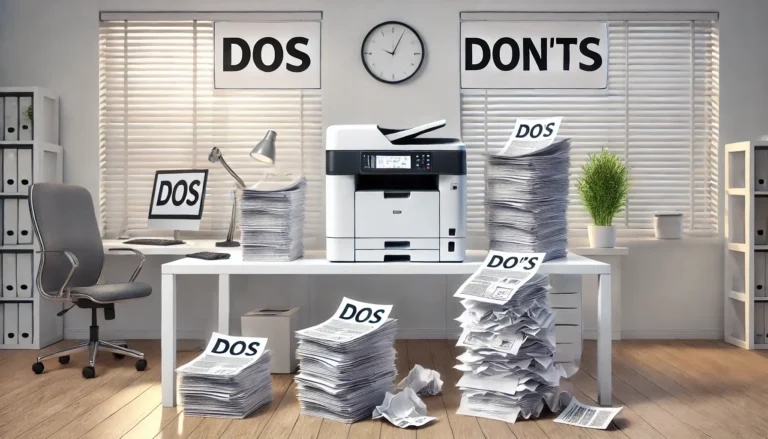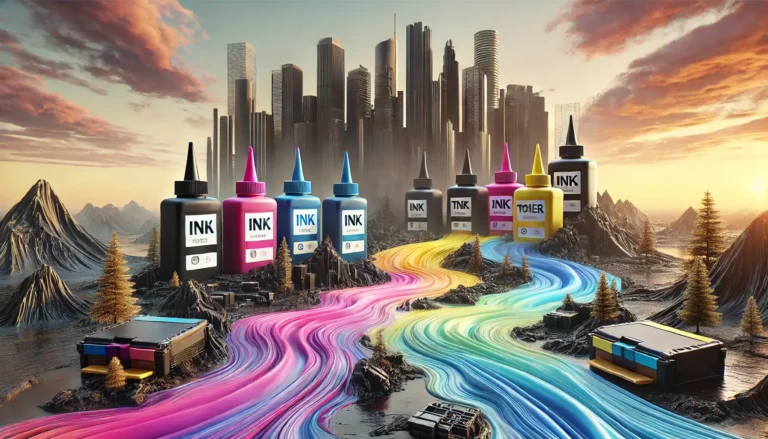You’ve got your printer set up and working. The ink cartridge is completely full and you’re ready to go.
But then you look at your first printout and see that something’s wrong. The paper isn’t right for the job, which means you need to go and buy more.
The problem is that there are so many different types of paper to choose from. Which is the right one for your needs?
That’s a question that we aim to answer with this article. Let’s take a look at the different types of printing paper, what they’re best for, and the various factors that will help you to make the right choice.
The Types of Paper
Every type of paper offers different qualities. Some come at a lower cost, but they’re also much thinner. Others offer qualities that make them ideal for presentations and leaflets. Let’s examine each type of paper.
Bonded Paper
One of the strongest types of paper, bonded paper offers greater durability than the average sheet of paper. This all comes down to the production methods. Manufacturers make regular paper using wood pulp, which can vary in quality.
However, they use rag pulp to create bonded paper. This typically comes from cotton fibers, which are what lends the paper its strength. As a result, you’ll use bonded paper when you’re printing something important that you have to present to somebody else.
Best Used For – Final reports, envelopes, and letterheads.
Matte Paper
One of the most common types of paper, you can distinguish matte paper via its white coating. This has a special purpose, as it soaks ink into the paper quickly. This ensures that the ink dries faster, making it an excellent choice for bulk printing jobs.
This quick drying also means that the ink is less likely to smudge, either during printing or when you’re handling the document. The tradeoff is that the colors don’t look as sharp and vivid as they may do on other paper.
Moreover, the matte finish prevents glare. If a light hits the paper, it won’t make the information on the paper more difficult to read.
Best Used For – Large-scale printing jobs, leaflets, and printing drafts.
Glossy Paper
In many ways, gloss paper is the opposite of matte paper. While it also has a special finish, this paper has special absorption qualities that emphasize the vividness of the colors in the printout.
Unfortunately, this means that the ink stays wet for longer. If you try to print several images using glossy paper, you may find that the paper on the bottom of the stack ends up with smudged ink. Moreover, you must take care when handling a fresh glossy print, as your fingers may smear or smudge the ink.
Furthermore, the gloss combined with the ink can lend the paper a slightly sticky quality. Stacking glossy paper can lead to the printed side of one piece sticking to the blank side of another.
However, these problems disappear when the ink dries. As long as you give glossy paper the time it needs, you’ll achieve vivid and sharp printouts that really stand out.
Best Used For – Leaflets, flyers, brochures, and photographs.
Recycled Paper
As the name suggests, recycled paper is made using old paper. Manufacturers pulp the old paper to make new sheets. As a result, the paper is usually thinner than its unrecycled compatriots.
However, the environmentally-conscious often prefer recycled paper because it doesn’t require the cutting down of new trees. Moreover, advanced recycling techniques have made it easier to produce recycled paper that doesn’t lose too much quality.
Best Used For – Memos, forms, and internal business reports.
Uncoated Paper
Perhaps the most common paper type, uncoated paper is likely the type that you have in your printer right now. The lack of a coating means it doesn’t offer the vividness of glossy paper, or the quick-drying capabilities of matte paper.
However, it does the job well in most cases. The paper still absorbs ink quite well. In fact, uncoated paper takes less time to dry than glossy paper. Moreover, the lack of coating means that you can write easily on the paper.
Best Used For – Any forms that others will write on, memos, and letters.
Inkjet vs Laser Printing Paper
As well as those main paper types, you may also have to consider the type of printer you have. Some manufacturers make paper that’s specifically suited to either inkjet or laser printers.
Generally speaking, you can get all of the above paper types in both inkjet and laser formats. However, laser printers offer a few more options. You’re more likely to find paper suited to things like label making and check printing because laser printers often provide options to create such documents.
Smoothness is also a common differentiator between laser and inkjet papers. Laser printers use a combination of toner and heat to place an image onto the paper. As a result, smooth paper offers the best results. However, inkjet printers, especially those using water-based inks, require paper that has some texture. This ensures the paper can soak up the inks, rather than leaving them to pool on the surface.
Both the materials and the coating contribute to a paper’s smoothness.
The Factors to Consider When Buying Printer Paper
So, how do you choose the right paper for your needs?
These are the key things to consider:
The Coating
The best coating depends on the type of project you’re working on. Glossy tends to work best for high-quality leaflets and flyers, though you have to take care when printing to ensure no smudging occurs. Matte coatings work better for high-volume print jobs. They prevent smudging due to their quick absorption rate, but you won’t get as vivid a printout.
However, in most cases, uncoated paper should do the job. While you won’t get a professional quality printout, it’s fine for anything that you don’t have to present to others.
Paper Weight
You’ll usually find the paper weight – measured in pounds or grams – on the packaging. The weight tells you the thickness of the paper. Generally speaking, heavier paper is of a higher quality. It’s more durable, which makes it a better choice for professional use. The most common weights you’ll see are:
- 75g/20lbs – The weight of most types of printer paper.
- 90g/24lb – A better choice for double-sided printing. This thicker paper also reduces the amount of show-through from the printed side.
- 150g/40lbs – You’ll see this weight on card and poster paper. It’s an excellent choice for signs and it tends to produce very vivid colors.
Brightness
You’ll also find that some manufacturers provide a brightness rating on their paper. Typically using a scale of between 1 and 100, the brightness affects the sharpness of the resulting print. The brighter the paper, the better the printout will look.
The Final Word
Choosing the right type of paper may not seem like a big deal. After all, you can print well enough with any type of paper.
However, it becomes more of a concern when you’re printing for professional purpose. Recycled paper may not provide the professional sheen that an advertising leaflet needs. However, expensive bonded paper isn’t a great choice for internal memos or documents that only you will see.
Use the information in this article to decide which the best paper type is for you. Once you know, head to our catalog to find a range of paper types.


